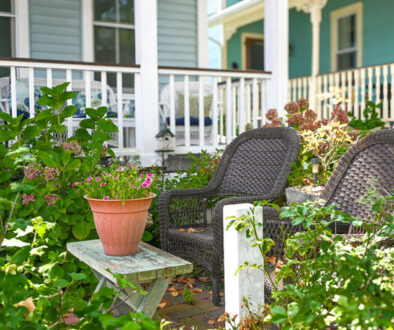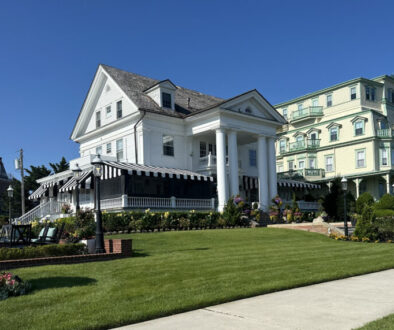North Wildwood and Stone Harbor Point
The movement of sand down the shoreline, known as longshore drift, creates an ever-changing landscape at Stone Harbor Point and the North Wildwood inlet. Every year both these places get closer; perhaps they will meet one day! While the steady southward movement of sand is obvious, one big storm could change everything very quickly.
20 years ago—how time flies—I was a regular on Stone Harbor Point while working on The Shorebird Guide with Michael O’Brien and Kevin Karlson. The spit was much shorter then, there were fewer dunes, and a lot more shorebirds on the west side of the spit. Today it seems like miles to walk to the tip, though I am older, and the optical equipment does seem to be getting heavier, and there are certainly more dunes.

With the North Wildwood beaches in the inlet getting larger, birds move between the two places depending on tides, people disturbance, and nasty Peregrines looking for a tasty snack. The sand is hard and white—perfect for reading magazines and going for walks. The birds like it too. There are more disturbances on the smaller Wildwood beaches in summer, so I tend to go there more in winter.
Both places are great for Sanderlings. These are the lines of small shorebirds running into the sea after the waves, only to be chased back out again. We get to see them nearly all year round. Their colors change from gray in winter to blend with the beach, to brighter reds and browns, better suited for their high-Arctic breeding grounds and getting a mate. They often molt here in spring, so the new feathers look particularly spanky; they’re older and more faded when southbound. It often shocks me how these birds fly all the way to the Arctic in late spring and many are back here in July. They don’t mess around on the breeding grounds. Put more coldly, they stick around until the youngsters are just old enough to survive on their own.
Mixed in with Sanderlings, though not dashing into the water often, are Least, Semipalmated and Western Sandpipers. These are often known as ‘peeps.’ All are 20-30 percent smaller than Sanderling and much less rounded and fat. The Least is the smallest. It has the shortest legs and so tends to be on the drier and higher parts of the beach. They crouch on bended legs, shuffling along from side to side, they are darker brown with a solid breast band. Their legs are yellow/green if you see them well.
Semipalmated and Westerns are a bit bigger and longer legged than Least and more suited to being in the water. Westerns are somewhat Sanderling-like, being paler and fatter-bodied. Years ago, hundreds spent early fall on these beaches and they were the best place in New Jersey to see numbers of them. Today, numbers are down, presumably because the beach and food are no longer as appetizing. A few stay until they’re frozen out, usually around Christmas.

Semipalmated are the most common of the three small sandpipers, and called peeps because of their high-pitched calls. Semipalmated Sands are named after their hard-to-see palmations between their toes. Westerns have them too! They are common pretty much everywhere. The most aggressive birds tend to be the most ubiquitous. Semips are feisty. You can hear them chattering and often facing off with another, bent over and tail cocked high in the air ready to attack. Sometimes they fight, but more often it is just a threat. Watch closely and they all keep their own space or territory. It’s great fun watching them for a while. Try it and see if you can draw some parallels with humans.
One of my favorites is the Black-bellied Plover. We Europeans call them Grey Plovers—they are grey in winter and that is when we get lots of them here. Black-bellies are bruisers; big and chunky, they have a hefty bill you wouldn’t want to mess with. Like all plovers, they congregate in groups in winter when roosting, then spread out on the beaches and marshes to feed. They run several steps with purpose and then stop on a dime to pick up their dinner. In flight they have a piercing clu-weeee and diagnostic black armpits.
The much smaller Semipalmated Plover—you can work out how it got its name—can also occur in the hundreds at certain times. Look for its much smaller size and dark neckband.
About the same size is the endangered Snowy Plover. I am sure you have heard this species talked about—Stone Harbor Point has a few pairs, but it is a battle to stop them disappearing in New Jersey. They nest higher up the beach among shells, driftwood, and the like, running down to the water’s edge to feed. As they breed, they are incredibly pale, designed to blend into the white sands. Also chunky, they have indistinct breast bands and orange legs. Most beach birds only have shallow scrapes as nests, so the youngsters tend to become very mobile very quickly. Nests are always the most dangerous places but particularly on open beaches with foxes, ghost crabs, peregrines, and other predators.
If you see a tiny ball or two of white fluff, it will be a recently fledged Piping Plover. The parents are rarely far away but as you know, it is hard to be in two places at once and they don’t have hands to grab the kids. If you get too close to the young ones, the adult will try to get you to follow it in the opposite direction. Sometimes they’ll feign a broken wing to look vulnerable and grab your attention. Anything to protect the kids!



